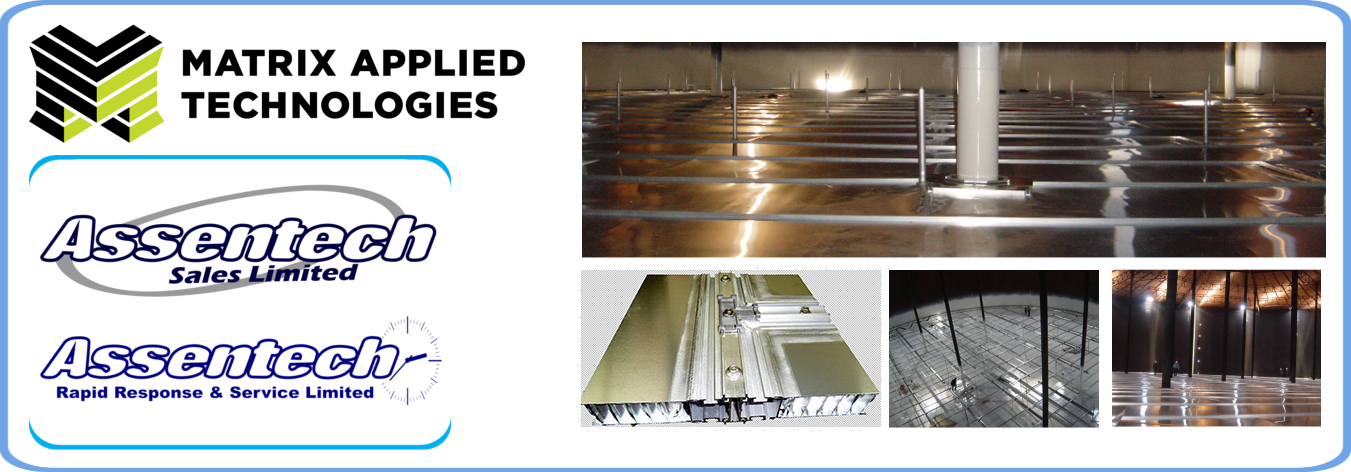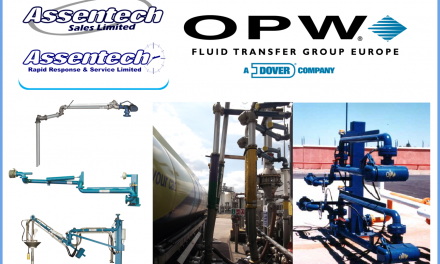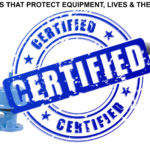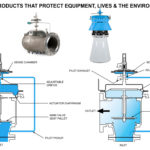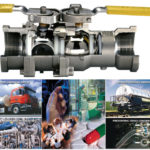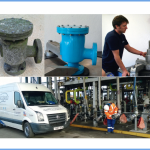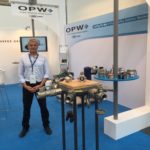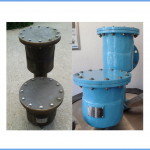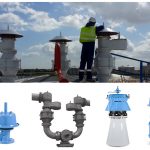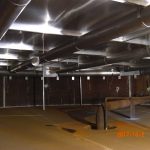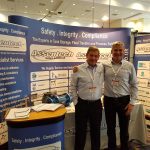We will explain in this article the advantages of the Matrix Technologies Heavy Duty Internal Floating Roof (IFR) COMPARED with other IFR types.
1- Heavier construction than most other types:
The Matrix Technologies Heavy Duty Aluminium Internal Floating Roof (IFR) has an integral main structure or frame to which the sheeting and pontoons are added. Conventional lightweight IFRs designs, by contrast, have pontoons and sheeting as an integral part of the structure. With lightweight IFRs designs, if sheeting or pontoons are to be replaced, it is a difficult operation. In some IFR designs, as soon as the sheeting is removed, the remaining structure is not easily serviceable.
2- Legs not connected to the pontoons:
The Matrix Technologies Heavy Duty IFR has a proper frame, with regularly spaced crossbeams, legs are connected to the frame and not to the pontoons. This eliminates the likelihood of pontoon end cracking. Pontoon end cracking is a common phenomenon with conventional design IFRs due to in-tank turbulence.
3- Easy Assembly:
All peripheral main beams are angle-cut at the end to exactly conform to the rim inside radius. All main beam and crossbeam connection holes within the IFR are pre-punched for easy assembly. Shoe seal mounting holes on the rim are pre-drilled to exactly pre-determine seal shoe spacing and overlap. This makes shoe seal installation extremely fast. Main beam-to-rim connections are made so that the top of the main beam is flush with the top of the rim. This allows proper sheet clamping right to the rim. Most lightweight IFR designs run the main beams under the rim flange and then bolt to the rim. This does not allow proper sheet clamping at the rim.
4- Extruded Rim:
The Matrix Technologies heavy duty rim is better able to resist deformation caused by wave action in the tank. Wave action frequently occurs due to turbulence caused by pumping, use of mixers and gas slugs. These events, particularly gas slugs have been known to cause serious damage to lightweight sheet metal IFR rims. Having an extruded rim allows easy fitment of a shoe seal without rim reinforcement.
5- Anti-static/earth connection:
Pumping of bi-polar solvents in particular, can generate significant static electricity. This must be dissipated to ground. The usual way this is done is by hanging one or more cables from the tank fixed roof and connect these to the IFR. The problem with this idea is that when an IFR floats to High Level, the static cable snakes all over the IFR surface. The danger is that this cable may snag on something. It has been known that this cable has gone down into the rim space and either got caught on a landing leg or a seal shoe with destructive result when the IFR was lowered. To overcome this problem, the Matrix Technologies IFR uses a static coil. This coils around the anti-rotation cable and maintains the static wire in a fixed location eliminating any snagging problem.
6- Matrix Technologies Internal Shoe seal:
One constant failure item on an IFR in the past has been the rim seal. Usually a polyurethane wiper seal, this variously lasted between 2 and 6 years before seriously gaping at the rim allowing vapours into the space above the IFR and increasing the possibility that vapour concentration may rise to the explosive range. The Matrix stainless steel shoe seal is a reliable solution to this problem. Based on experience with shoe seals in EFRTs, we estimate the life of this seal to be in excess of twenty years.
7- Sheeting fastened from the top:
Some IFR designs use a through bolt & nut to clamp the sheeting. This requires a person on the top of the IFR as well as somebody underneath to install one bolt. The bolthole provides a potential vapour leak path. The Matrix Technologies IFR uses special screws at 200mm (7-7/8”) pitch. These screw into the main I-beam from the top. A one-man operation & no leak path. Other IFR manufacturers have sheet-clamping fasteners at spaces of up to 400mm (16”). This means that the sheeting is not clamped well and deck seam loss can result. The excellent sheet clamping achieved by Matrix Technologies is due to good beam section modulus and 200mm sheeting screw pitch so that deck seal loss is close to zero. Vacuum box tests with soapy solution carried out on the Matrix Technologies IFR deck seams in the USA showed zero loss over a 1m (3ft) test section.
8- Deck Sheeting:
API 650 Appendix H used to specify a minimum deck sheeting thickness of 0.46mm (0.018”). This was recently increased to a minimum of 0.51mm (0.020”). Experience shows that this is still too thin. Sheeting can corrode over the years depending on ambient air moisture levels. Frequently we have found that damage to thin sheeting has occurred when workmen have been working on the IFR. Matrix Technologies uses 0.6mm (0.024”) sheet as standard, with other thicknesses available on application. We believe that 0.6mm sheet offers a reasonable compromise between cost, weight & strength.
9- Stainless steel fasteners:
The Matrix Technologies Heavy Duty IFR uses only stainless steel fasteners. Many IFR manufacturers use electro-plated steel fasteners. These corrode beneath the IFR and are impossible to remove later. It is a particular problem with those designs that use a through-bolt to clamp the sheeting. These fasteners with the corroded exposed thread under the IFR are impossible to remove.
10- 1000 lb/ft² Load capability:
API 650 Appendix H requires that IFRs be capable of withstanding a concentrated load of 500lb/ft². Tests conducted in our factory show that the Matrix Technologies Heavy Duty IFR can withstand 1000lb/ft². With the exception of the marked sheeting, all components of the test rig were returned to stock undamaged.
Assentech are proud to supply the full range of Internal Floating Roofs and Geodesic Domes manufactured by Matrix Technologies (formerly BTE). We are also fully trained and experienced to offer full installation capability. Please contact us for further details
 Assentech- Geodesic Dome Installation
Assentech- Geodesic Dome Installation
Assentech were subcontracted to assemble and install a 25m geodesic dome for Shaft G on the Lee Tunnel project. My experience with Assentech from pre-contract through to assembly has been very positive. Unlike other subcontractors I have experienced on this project, Assentech had a very positive attitude to producing the level of documentation required for a project of this scale. Leading to a high quality pre construction packaged approved in a timely manner. The communication regarding the manufacturing process was first class allowing us to easily plan our works and prepare the site. Dome assembly was carried out very efficiently and completed to programme. The task was correctly resourced and well supervised. The work force had a positive attitude and carried out the task safely. In summary from my perspective it has been a very easy subcontract to manage with a high quality finished product.
Robert Colthorpe
 Assentech wins supplier excellence award from Eastman Chemicals
Assentech wins supplier excellence award from Eastman Chemicals
We were extremely pleased with the level of service and professionalism demonstrated by Assentech, right from our initial enquiry, through delivery and post installation. As a recipient of only two of these awards made by Eastman Chemical Company in the UK, based on performance in 2014, Assentech are rightly proud of their achievements.
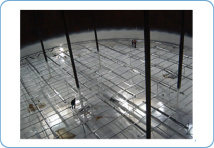 Assentecha-IFR Installations at Vopak, Teesside
Assentecha-IFR Installations at Vopak, Teesside
As you said “you delivered what it said on the tin”. On time and on budget. Your up front engineering to determine the suitability of your product for our application was second to none, i have not seen anyone else in the industry pay as much attention to detail before you get the purchase order number as Assentech.
Garry Lee
 Assentech–IFR Installations at Navigator Terminals
Assentech–IFR Installations at Navigator Terminals
Assentech have supported our Navigator Terminal (formerly known as Vopak Teesside) on two important projects by providing technical assistance and supplying and fitting a total of 11 Internal floating roofs. Both projects have been completed on schedule and on budget. Assentech have provided an excellent level of experience and front end engineering support with high quality drawings and documentation. Their specialist on site labour have worked collaboratively with us and Assentech have proven to be open, honest and flexible partners.
We have experience of both their Heavy Duty Pontoon type and Full Contact IFR’s and we continually monitor operation and performance of all lFR units Installed on site and consider the Assentech supplied Matrix brandto be the best in the market with exceptional build quality and rigidity. Our clients have inspected the installations and have always remarked upon the build quality and have been impressed with their strength in fully supporting up to four people without noticeable deformation. The design and construction of their stainless steel shoe seals continue to prove to operate excellently with no noticeable reduction in performance or flotation ability over the time since Installation.
Assentsch have proven to be extremely competitive on price and their installation and inspection activities have always been thorough. Navigator therefore have no hesitation in recommending Assentech to other companies considering their services.
Brian Beddow

